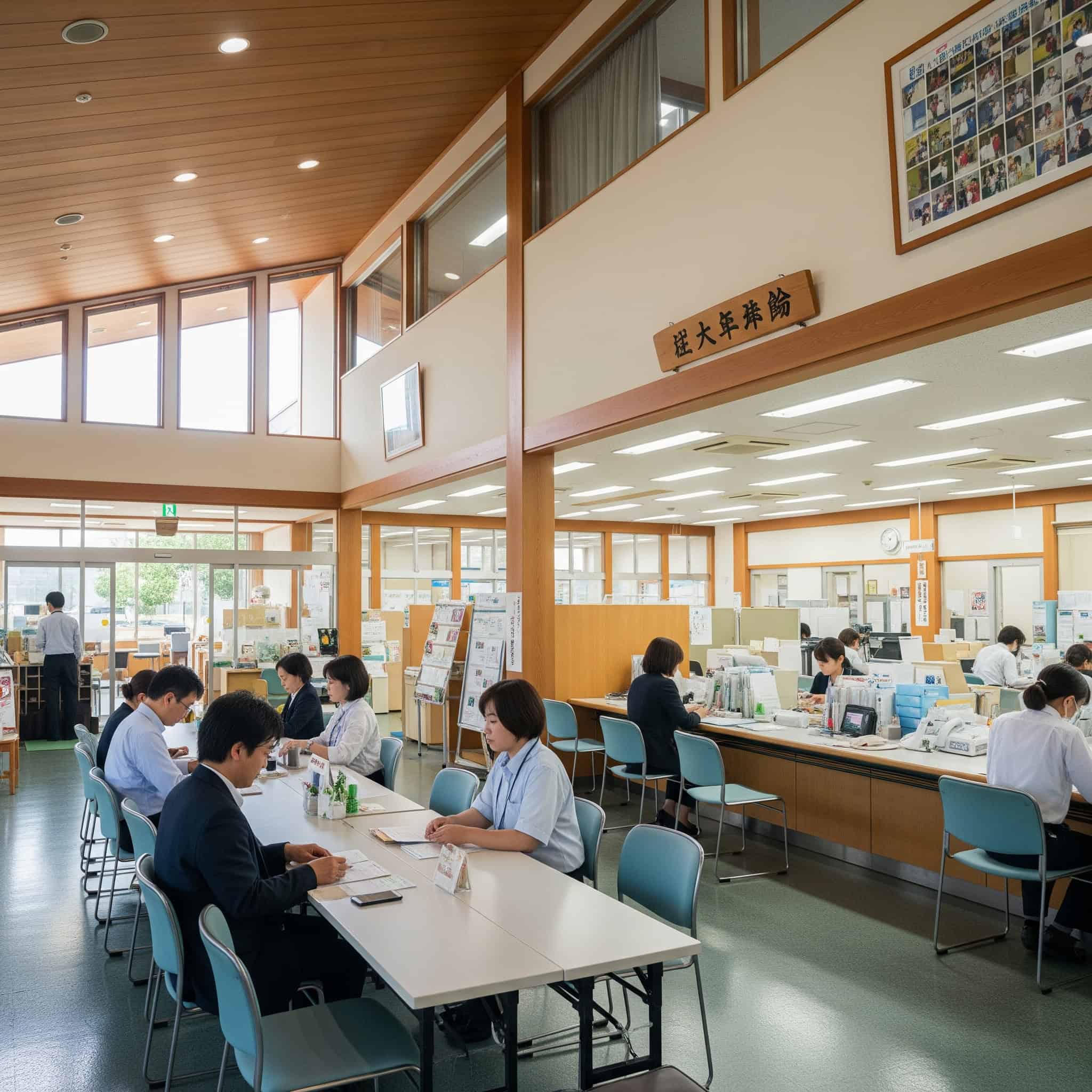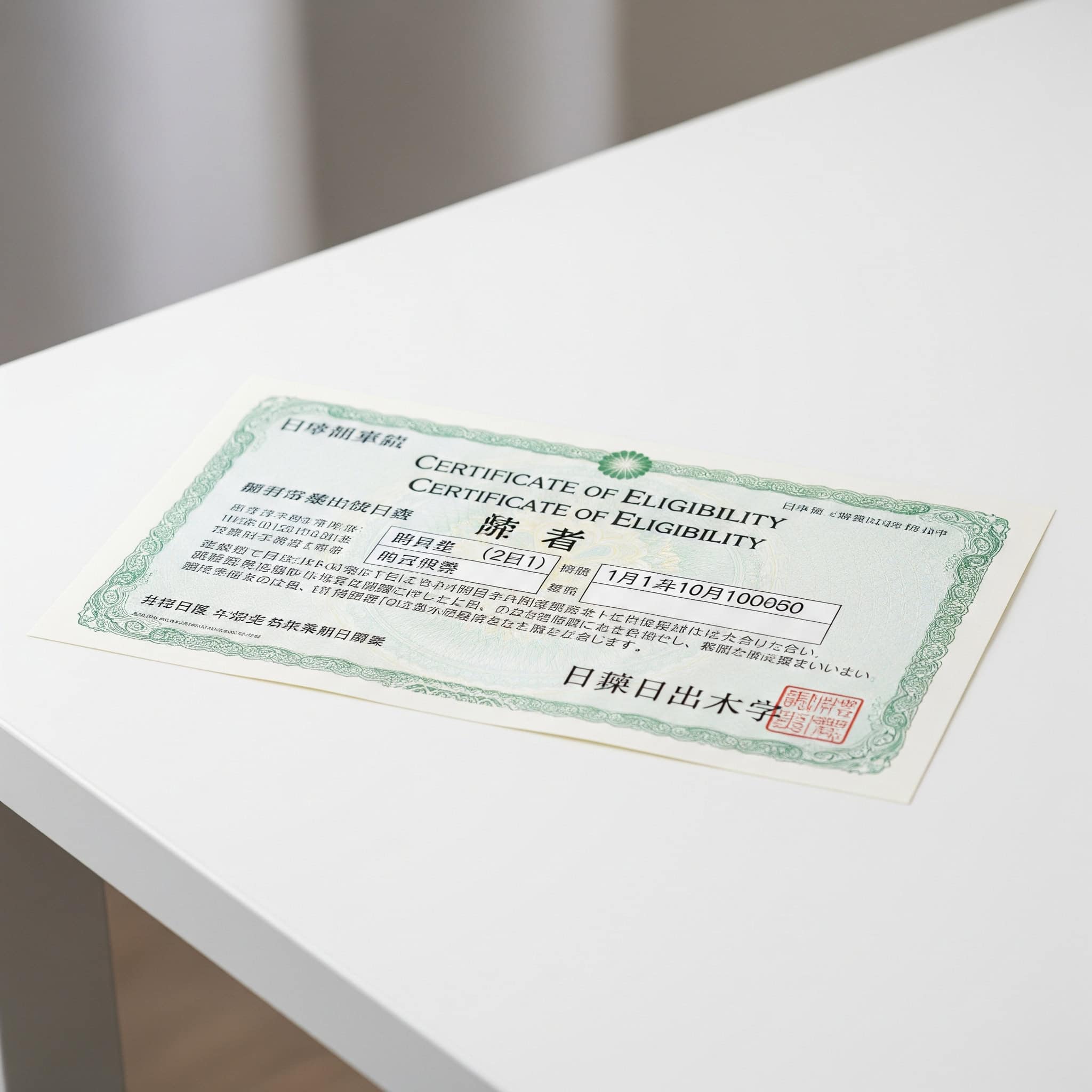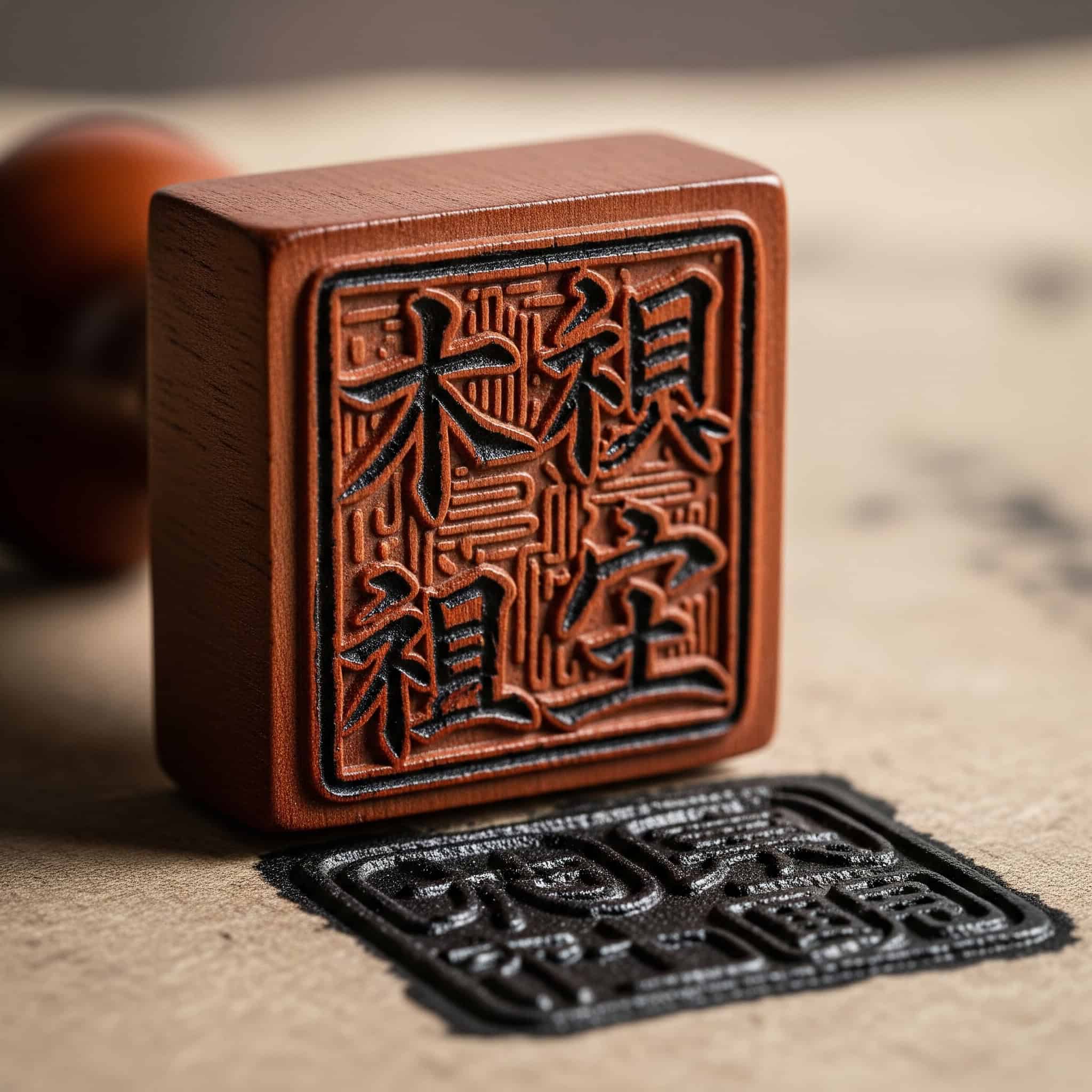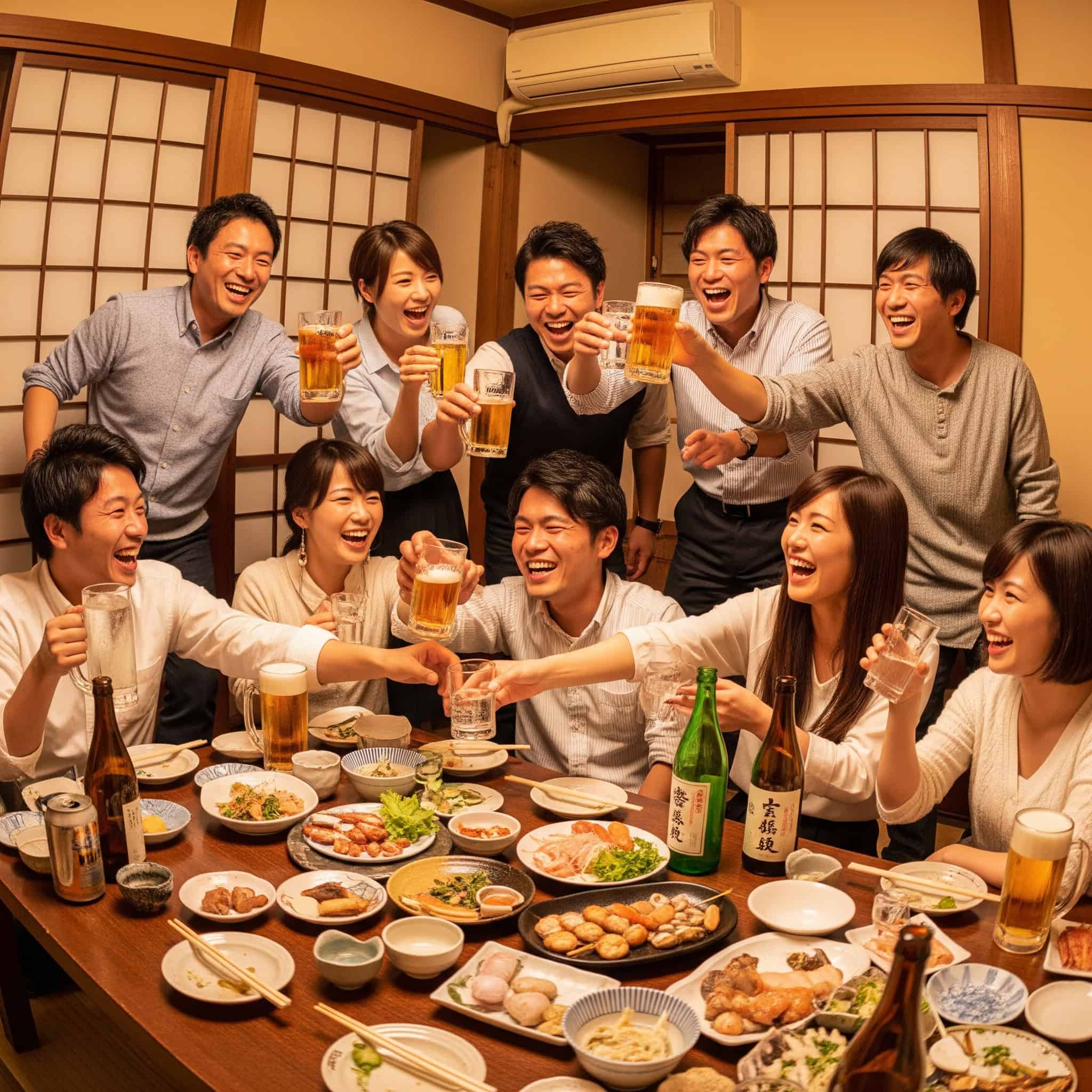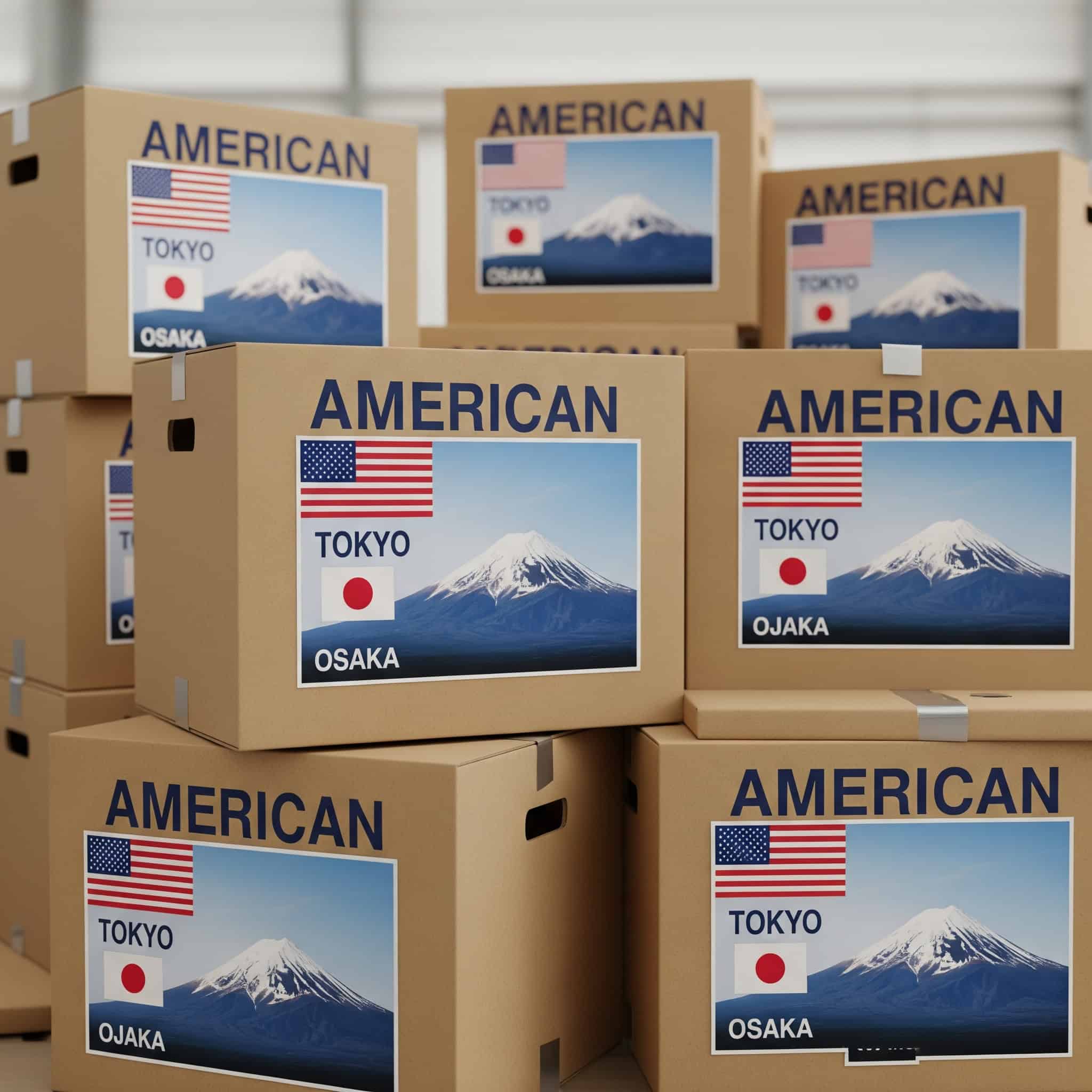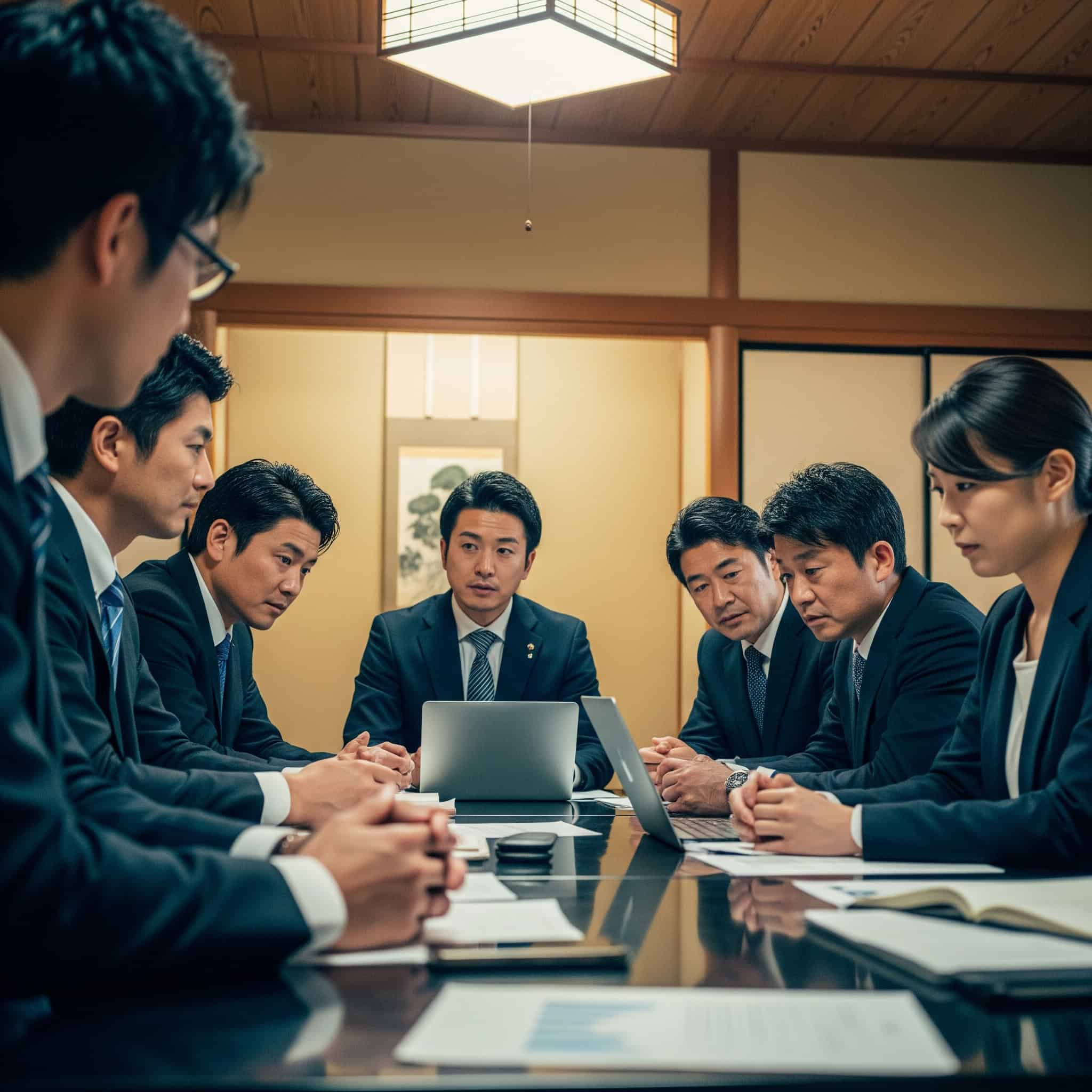The Ultimate Guide to Moving to Japan from US: What They Don’t Tell You About Starting Over
Moving to Japan from the US involves complex challenges beyond packing boxes and booking flights. This comprehensive guide explores the psychological, bureaucratic, social, and practical aspects of relocating to Japan that most resources overlook. We’ll examine the mental preparation needed for this significant life transition and provide actionable strategies to navigate Japanese society successfully.
Table of Contents
The Psychological Transition
The Bureaucratic Labyrinth
The Social Reintegration Process
The Practical Logistics of Relocation
The Temporal Adaptation Challenge
The Economic Recalibration
Cultural Code-Switching Mastery
The Psychological Transition
When I decided to move to Japan five years ago, I thought I was prepared. I’d studied the language, researched housing, and even practiced using chopsticks daily. What caught me completely off guard wasn’t the logistics—it was the profound internal shift required to adapt to Japanese society.
Relocating to Japan demands significant mental preparation that goes far beyond figuring out which boxes to pack. As Americans, we face unique psychological challenges when adapting to Japanese society, including fundamental shifts in identity, communication styles, and social expectations.
The transition from American individualism to Japanese collectivism requires conscious rewiring of social instincts and expectations over time. I found myself constantly second-guessing my natural impulses during my first months in Tokyo. Should I speak up in this meeting? Is it appropriate to decline this invitation? These questions consumed mental energy I hadn’t anticipated needing.
Research shows expatriates experience distinct psychological adaptation phases, with the most challenging period typically occurring 3-6 months after arrival. This timing makes perfect sense—the initial excitement has worn off, but you haven’t yet developed the cultural fluency to navigate daily life with confidence.
Cultural Identity Recalibration
Moving to Japan necessitates adjusting your cultural identity as you navigate between American individualism and Japanese collectivism. This process involves learning new social norms while maintaining your core sense of self.
Japanese collectivist culture prioritizes group harmony (wa) over individual expression, requiring conscious adjustment to social decision-making processes. During my first team meeting at a Japanese company, I proudly presented what I thought was a brilliant solution to a problem. The uncomfortable silence that followed taught me my first lesson in wa—innovations are welcome, but not when they disrupt established group processes.
Cultural adaptation typically progresses through predictable stages: honeymoon, culture shock, adjustment, and adaptation. I’ve watched countless American friends cycle through these phases, with many giving up during the culture shock phase when the challenges seem overwhelming.
Successful long-term residents develop bicultural competence rather than complete assimilation, maintaining flexibility between cultural frameworks. I’ve found this approach most sustainable—I can operate effectively in Japanese contexts while preserving core aspects of my American identity.
According to a 2024 report, there are now over 3.58 million foreigners living in Japan, with Americans making up one of the largest expatriate demographics, particularly in urban centers like Tokyo where 701,955 foreigners reside (19.6% of all foreigners in Japan).
Invisible Social Rules
Japan operates on numerous unspoken social protocols that natives understand intuitively but foreigners must consciously learn. Understanding “kuuki wo yomu” (reading the air) is essential for social integration and avoiding unintentional offense.
“Kuuki wo yomu” encompasses recognizing subtle contextual cues including body language, verbal tone, and situational expectations. I spent my first year in Japan feeling like I was constantly missing something obvious to everyone else in the room. In many ways, I was.
Japanese communication relies heavily on high-context messaging where meaning depends on shared cultural understanding rather than explicit statements. When my Japanese colleague said, “That might be difficult,” I learned (after pursuing several “difficult” projects) that this was actually a polite rejection, not an acknowledgment of a challenge worth tackling.
Developing observation skills through structured practice accelerates social rule acquisition. I started watching Japanese dramas with a Japanese friend who would pause to explain the subtle interactions I was missing. This practice helped me recognize patterns that would have taken years to discern on my own.
Maria, a software engineer from Boston, found herself confused when colleagues seemed upset despite never directly expressing disagreement during meetings. She later learned that their subtle cues—avoiding eye contact, using tentative language, and changing the subject—were actually signals of disagreement that Japanese colleagues could easily read. After six months of conscious observation and mentorship from a senior Japanese-American colleague, Maria developed the ability to recognize these subtle signals and adjust her communication approach accordingly.
The Gaijin (Foreigner) Identity Complex
In Japan, you’ll always navigate the status of being a “gaijin” (foreigner) regardless of your language skills or cultural adaptation. This permanent outsider status creates both unique challenges and opportunities that require psychological preparation.
The term “gaijin” literally means “outside person” and carries complex social implications that vary by context and region. In Tokyo, being visibly foreign might mean receiving extra patience from store clerks. In rural Hokkaido, it might mean becoming an instant celebrity in your neighborhood.
Research indicates foreigners who develop a secure internal identity independent of external validation report higher satisfaction with long-term life in Japan. I’ve found this to be profoundly true—the happiest long-term American residents I know have made peace with their perpetual “outsider” status rather than fighting against it.
Connecting with established American expatriates provides valuable mentorship for integrating this dual identity into your self-concept. My monthly dinners with a group of Americans who’ve lived in Japan for 10+ years have provided perspective I couldn’t have developed on my own.
For some Americans, the transition to Japan leads to unexpected personal and professional transformation. “Why I Moved” from Condé Nast Traveler profiles Hannah Kirshner, who initially moved to Yamanaka Onsen for a three-month apprenticeship at a sake bar but ended up purchasing two traditional Japanese homes and building a life in rural Japan, finding “more opportunities in Japan than I did in New York.”
Linguistic Transformation
Learning Japanese involves more than memorizing vocabulary—it requires adopting new cognitive frameworks and communication styles. This section addresses the psychological aspects of language acquisition and how to prepare for this fundamental shift.
Japanese language structure reflects cultural values through grammatical features like honorifics, sentence-final particles, and subject omission. The first time I realized I was unconsciously omitting subjects in my English conversations, I knew the language was rewiring my brain in subtle ways.
Neurological research shows language acquisition activates different brain regions when learning languages with different writing systems. This explains why learning Japanese feels so different from learning European languages—you’re literally developing new neural pathways.
Effective language learning strategies for Japanese prioritize practical communication skills over perfect grammar, especially during initial adaptation. I wasted months trying to master perfect keigo (honorific language) before realizing I needed to focus on basic communication first. Moving to Japan accelerated my learning in ways textbooks never could.
The Humility Threshold
Most Americans encounter a “humility threshold” when learning Japanese—a psychological barrier where you must accept feeling childlike again. Overcoming this threshold requires specific strategies and mindset adjustments.
The complexity of Japanese writing (combining hiragana, katakana, and kanji) creates a steeper learning curve than most European languages. I remember the frustration of being able to have a complex political discussion in English but struggling to read a children’s menu in Japanese.
Establishing a consistent language learning routine 6-12 months before moving significantly reduces adjustment stress upon arrival. The Americans I know who invested in serious language study before moving had noticeably smoother transitions than those who planned to “pick it up” after arrival.
Setting small, measurable goals helps maintain motivation through inevitable learning plateaus. When I hit a wall with kanji memorization, shifting my focus to improving my listening comprehension gave me a sense of progress while my reading skills developed more gradually.
Japanese Language Learning Phase | Psychological Challenge | Effective Strategy |
|---|---|---|
Initial Excitement | Overconfidence | Set realistic milestones |
Humility Threshold | Frustration/Embarrassment | Practice in low-stakes environments |
Plateau Phase | Motivation Loss | Join language exchange groups |
Functional Fluency | Social Anxiety | Celebrate small communication victories |
Advanced Integration | Identity Confusion | Develop bicultural perspective |
Communicative Identity Shift
Many Americans report feeling like different people when speaking Japanese versus English. This phenomenon reflects how language shapes personality expression and communication style.
Japanese communication emphasizes indirect expression, tentative language, and hierarchical awareness. I noticed myself becoming more reserved and less confrontational when speaking Japanese—not because I was pretending, but because the language itself guided me toward different expression patterns.
Practicing Japanese communication patterns even when speaking English helps develop necessary mental flexibility. I started incorporating more tentative phrasing and indirect requests into my English conversations with Japanese colleagues, which dramatically improved our communication even before my Japanese skills developed.
Research shows bilingual speakers often display different personality traits when operating in different languages. My Japanese friends consistently describe my “Japanese self” as more patient and thoughtful than my “English self”—an observation that matches my own experience of how the language shapes my thinking.
Non-verbal Fluency Development
In Japan, non-verbal communication carries significant weight. Developing conscious control of your facial expressions, gestures, and body language is crucial for effective communication.
Japanese non-verbal communication emphasizes restraint, with excessive emotional display often causing discomfort. My naturally expressive face and animated gestures created unintentional barriers during my early months in Japan. I watched as Japanese colleagues subtly withdrew when I became excited about ideas.
Specific Japanese gestures differ significantly from American equivalents and require deliberate practice. The first time I pointed to myself by touching my nose instead of my chest, my Japanese friends laughed with approval at this small but significant cultural adaptation.
Recording yourself in conversation helps identify unconscious American body language patterns that might need modification. This practice feels awkward but accelerates your awareness of habits you might not otherwise notice.
David, a marketing executive from Chicago, struggled with his tendency to use expansive hand gestures and maintain direct eye contact during his first months in Tokyo. After receiving feedback from his Japanese mentor, he created a daily practice routine: spending 10 minutes each morning watching recordings of effective Japanese presenters, then practicing their more restrained gestures and rhythmic eye contact patterns in front of a mirror. Within three months, his Japanese colleagues commented on his improved “presence” in meetings, though David noted it still required conscious effort to maintain these patterns during emotional discussions.
The Bureaucratic Labyrinth
Japan’s administrative systems present unique challenges for Americans accustomed to more straightforward processes. Navigating this complex bureaucracy requires patience, attention to detail, and understanding the cultural context behind seemingly arbitrary procedures.
Japanese bureaucratic systems prioritize procedural thoroughness and documentation over efficiency or user experience. This fundamental difference explains why processes that might take minutes online in the US can require multiple in-person visits and paper forms in Japan.
Understanding the cultural values underlying bureaucratic processes helps reduce frustration during administrative interactions. Japanese systems prioritize accuracy and accountability over convenience—a reflection of cultural values that, once understood, makes the processes more comprehensible if not more efficient.
My first encounter with Japanese bureaucracy involved registering my address at the local ward office. What I expected to be a simple form submission turned into a three-hour process involving multiple departments, numerous forms, and several official stamps. I left exhausted but with a deeper appreciation for the meticulous attention to detail that characterizes Japanese administration.
Visa Realities Beyond the Basics
While basic visa information is widely available, Japanese visa processes contain nuances that can surprise unprepared Americans. This section covers the hidden challenges and practical strategies for navigating the visa system successfully.
Japan offers 27 visa categories with varying requirements, restrictions, and social implications. The visa you hold affects everything from your ability to open bank accounts to how you’re perceived by potential landlords.
Most visa processes begin with obtaining a Certificate of Eligibility (COE) through a Japanese sponsor. This creates a dependency relationship that can be challenging for Americans accustomed to handling their own administrative affairs.
Visa renewal procedures often differ significantly from initial application processes and require advance planning. I’ve known several Americans who assumed renewal would be straightforward, only to discover new requirements or changed procedures that threatened their residency status.
As of 2024, there are 39,616 foreigners holding the Management Visa in Japan, which allows for business establishment with relatively accessible requirements, while the Highly-Skilled Professional visa (held by 26,803 people) offers an accelerated path to permanent residency after just one year.
The Certificate of Eligibility Dance
Before obtaining most Japanese visas, you need a Certificate of Eligibility (COE) sponsored by a Japanese entity. This creates a sequential challenge many Americans don’t anticipate in their planning timeline.
The COE application process typically takes 1-3 months and must be initiated by your Japanese sponsor. This timeline often surprises Americans who assume they can begin the process themselves or complete it quickly.
Required documentation varies by visa category but typically includes proof of financial stability, educational credentials, and detailed activity plans. The specificity required can be surprising—I needed to provide university transcripts with official translations, detailed employment history, and even a statement of purpose for my move to Japan.
COE approval rates vary significantly by visa category and applicant nationality, with work visas requiring more extensive documentation. While Americans generally face fewer hurdles than applicants from some other countries, approval is never guaranteed.
James, a software developer from Seattle, received a job offer from a Tokyo tech company in March but didn’t realize his visa process couldn’t begin until his employer filed for his Certificate of Eligibility. The COE application required his university transcripts, employment history verification, and detailed job description, taking 7 weeks for approval. Only after receiving the COE could James apply for his actual visa, which took another 2 weeks. This unexpected timeline forced him to delay his start date by a month, creating complications with his apartment lease in Seattle. James now advises friends to begin the visa process at least 3 months before their intended move date.
The Hidden Visa Hierarchy
Not all visas offer equal status or practical benefits in Japan. Understanding the implications of your specific visa category helps you prepare for potential limitations and social perceptions.
Highly-Skilled Professional visas offer accelerated permanent residency paths and greater flexibility than standard work visas. These visas use a point system based on education, income, and professional achievements, with benefits increasing as your point total rises.
Entertainment and certain specialized visas may limit your ability to open bank accounts or secure housing. I’ve watched performer friends struggle with basic life setup because their visa category triggered extra scrutiny from banks and landlords.
Visa status affects health insurance options, tax obligations, and access to government services. Your visa category determines whether you’ll be enrolled in the national health insurance system or an employer-based plan, which impacts both your healthcare access and monthly expenses.
The Residential Registration System
Japan’s residential registration system (juminhyo) connects to virtually every aspect of daily life. Understanding this system’s importance and requirements helps you establish your administrative existence in Japan smoothly.
The juminhyo system serves as the foundation for accessing healthcare, banking, utilities, and government services. Without proper registration, you effectively don’t exist in the Japanese administrative ecosystem.
Registration procedures vary slightly between municipalities but follow the same basic framework nationwide. This consistency helps if you need to relocate within Japan, as the process will be familiar even in a new city.
Changes in residence require prompt notification and re-registration with local authorities. Even moving across the street necessitates updating your registration—a fact that catches many Americans off guard when they relocate.
The movement of Americans to Japan continues in various forms, including military relocations. “U.S. Marines from Okinawa” from Kyodo News reports that “100 logistics personnel” are relocating to Guam this year, marking “the first group among more than 4,000 U.S. Marines set to be transferred from Japan’s southern island prefecture of Okinawa” as part of a larger $8.7 billion relocation plan.
The Critical First Two Weeks
The initial registration period after arrival establishes your entire administrative existence in Japan. Completing these processes correctly within the required timeframe prevents complications that can affect multiple aspects of your life.
Registration at your local ward office must occur within 14 days of establishing residence. This non-negotiable deadline surprises many Americans who might be focused on settling into their new homes and jobs.
This initial registration triggers a cascade of required processes including health insurance enrollment and tax registration. Missing the initial registration deadline creates a domino effect of administrative complications that can take months to resolve.
Required documents typically include your passport, visa, residence card, and lease agreement. Having these documents organized before your ward office visit saves significant time and prevents the need for return visits.
Timeline | Critical Administrative Task | Required Documents | Consequences of Delay |
|---|---|---|---|
Within 14 days of arrival | Residential registration at ward office | Passport, visa, residence card, lease agreement | Unable to open bank accounts, register for utilities |
Within 14 days of registration | National Health Insurance enrollment | Residence card, registration certificate | Retroactive premium payments, gaps in coverage |
Within 30 days of arrival | My Number registration | Residence card, registration certificate | Delays in tax processing, benefit applications |
Within 90 days of arrival | Convert/obtain driver’s license | Passport, residence card, US license, translation | Inability to legally drive, potential fines |
Within 90 days of first income | Tax registration | Residence card, employment contract | Tax penalties, complications with visa renewal |
The My Number System Integration
Japan’s national identification system (My Number) connects all your administrative records. Understanding how this system works and protecting your information appropriately is essential for long-term residence.
The 12-digit My Number serves as your identifier for tax, social security, and disaster response systems. This number follows you throughout your time in Japan and should be protected as carefully as your Social Security number in the US.
Your My Number notification arrives by mail after residential registration and requires secure storage. I recommend making several copies and storing the original in a safe place, as replacing a lost My Number card can be a bureaucratic nightmare.
The My Number card (optional but increasingly useful) provides official photo identification and digital authentication capabilities. While not mandatory, this card simplifies numerous administrative processes and is becoming increasingly important for digital government services.
Banking and Financial Integration
The Japanese financial system operates differently from American banking norms. Preparing for these differences helps you establish financial stability quickly after arrival.
Japanese banking emphasizes physical documentation, in-person procedures, and traditional verification methods. My first bank account application required my passport, residence card, registration certificate, employment contract, and personal seal—all verified in person during a 90-minute appointment.
Most financial institutions maintain limited English support, even in major urban centers. I’ve watched fluent Japanese speakers struggle with banking procedures due to the specialized terminology and complex forms involved.
Banking hours typically run from 9:00 AM to 3:00 PM on weekdays only, with limited online service options. This restricted schedule creates significant challenges for working professionals who need to conduct banking business.
The cost of moving to Japan varies significantly based on household size and departure location, with a 1-bedroom apartment move from the US East Coast to Tokyo costing approximately $3,400-4,300, while a 3-bedroom house relocation can range from $7,600-9,500, not including the substantial upfront housing costs in Japan.
Cash Culture Navigation
Despite technological advancement, Japan remains surprisingly cash-dependent. Adapting to this cash culture requires specific preparation and adjustments to your financial habits.
Approximately 70% of transactions in Japan still use cash, particularly for amounts under ¥10,000. This reality means you’ll need to carry more cash than you might be comfortable with as an American accustomed to card-based transactions.
Japanese ATMs often operate on restricted hours and may not accept foreign cards. I learned this lesson the hard way when I found myself unable to withdraw cash on a Sunday evening during my first month in Japan.
Notify your American bank of your relocation and inquire about international ATM withdrawal limits and fees before departure. Some American banks offer global ATM fee reimbursement programs that can save you significant money during your transition period.
The Inkan Reality
Many financial transactions in Japan require a personal seal (inkan or hanko) rather than a signature. Understanding this system and obtaining appropriate seals early simplifies numerous administrative processes.
Three types of seals serve different purposes: mitomein (everyday use), ginkouin (bank-specific), and jitsuin (legal registration). Investing in quality seals appropriate to your needs prevents complications with document processing.
Registered seals must be officially documented at your local ward office with a certificate (inkan touroku shoumeisho). This registration process creates a legal link between you and your seal, similar to notarizing your signature.
Seal design should follow specific conventions, typically using katakana for foreign names unless you have legally established kanji. I initially made the mistake of creating a seal with my name in kanji I’d chosen myself, only to have it rejected by my bank because it didn’t match my official identification.
The Social Reintegration Process
Building a meaningful social life in Japan requires understanding implicit social structures that differ from American norms. This section explores strategies for developing connections in both Japanese and expatriate communities.
Japanese social relationships develop through structured contexts and follow different progression patterns than American friendships. Where Americans might strike up conversations with strangers at a coffee shop, Japanese social connections typically form through formal introductions or shared institutional affiliations.
Successful social integration typically requires balancing Japanese cultural immersion with expatriate support networks. I’ve found this balance essential for maintaining both cultural growth and psychological wellbeing.
When I first arrived in Japan, I expected to make friends the same way I did in the US—through casual conversations and spontaneous social invitations. Six lonely months later, I realized I needed to completely rethink my approach to building relationships in this new cultural context.
The Structured Nature of Japanese Friendship
Japanese social relationships typically develop within specific contexts and follow different progression patterns than the more spontaneous American approach. Understanding these differences helps set realistic expectations for friendship development.
Japanese friendships typically remain compartmentalized within their originating context (work, school, hobby groups). This compartmentalization means your work colleagues may never meet your hobby friends, and neither group may ever visit your home.
Relationship development follows predictable stages with greater emphasis on group activities before one-on-one interaction. I spent nearly six months attending weekly language exchange events before receiving my first invitation to meet individually with a Japanese participant.
Reciprocity and obligation play more explicit roles in Japanese friendship maintenance than in American relationships. Gift-giving, seasonal greetings, and attendance at important life events follow more structured patterns that signal relationship commitment.
Context-Bound Relationship Building
Japanese social relationships typically remain within the context where they formed. Identifying and joining structured social contexts aligned with your interests provides the foundation for building meaningful connections.
Structured contexts for relationship building include workplace teams, hobby circles (サークル), neighborhood associations, and PTA groups. I found my most meaningful Japanese friendships developed through a weekend hiking circle I joined during my second month in Japan.
Consistent attendance and participation signal commitment more effectively than verbal expressions of interest. My Japanese friends later told me they began to consider me a potential friend only after I had attended the hiking group consistently for three months.
Relationships typically develop gradually over 3-6 months of regular interaction rather than through immediate connection. This timeline feels excruciatingly slow to many Americans accustomed to accelerated friendship formation, but patience yields more stable relationships in the Japanese context.
Moving to Japan taught me that friendship development follows cultural patterns I had never consciously recognized. The structured approach to relationship building initially felt artificial compared to the spontaneous connections I was accustomed to in the US, but I’ve come to appreciate the depth and reliability of friendships that develop through this more deliberate process.
The Nomikai System
Work and social drinking gatherings (nomikai) serve as crucial relationship-building venues in Japan. Understanding nomikai etiquette and expectations helps you navigate these important social functions effectively.
Nomikai serve multiple social functions: stress release, hierarchy relaxation, and relationship development. These gatherings create spaces where colleagues can interact outside formal workplace roles, though hierarchical awareness remains important.
Specific etiquette governs pouring drinks, seating arrangements, and speech-making during formal gatherings. Learning these protocols helps you participate appropriately and demonstrate cultural awareness.
Non-drinkers can participate successfully by accepting initial pours of non-alcoholic beverages and focusing on the social aspects. I’ve attended countless nomikai with non-drinking colleagues who navigate these events successfully by emphasizing participation rather than consumption.
My first nomikai experience was overwhelming—the complex pouring rituals, seating hierarchy, and expectation to participate in group singing caught me completely unprepared. By my fifth nomikai, I had learned to appreciate these gatherings as valuable opportunities to develop workplace relationships that would have remained formal and distant otherwise.
The Expatriate Ecosystem
The foreign community in Japan has its own complex social structure. Learning to navigate this ecosystem while avoiding common pitfalls helps you build a balanced social network.
Expatriate communities vary significantly between regions, with major cities offering more diverse international networks. Tokyo’s foreign community includes distinct subcommunities organized around nationality, profession, and interests, while smaller cities might have a single, more cohesive foreign community.
Online platforms like Facebook groups, Meetup, and city-specific forums serve as primary connection points for newcomers. These digital communities provide both practical information and social opportunities during your transition period.
Long-term residents often develop distinct social patterns from short-term visitors or temporary workers. Understanding where you fit within this spectrum helps you connect with people sharing similar experiences and challenges.
Moving to Japan connected me with an incredibly diverse expatriate community that has enriched my life in unexpected ways. Through expatriate networks, I’ve developed friendships with people from dozens of countries—relationships that have broadened my perspective far beyond what I might have experienced remaining in the US.
The Expat Trap
Many Americans fall into the “expat trap”—socializing exclusively with other foreigners and developing limited understanding of Japanese culture. Balancing expatriate connections with Japanese cultural immersion creates a more fulfilling experience.
Research shows expatriates who develop meaningful local relationships report higher satisfaction and lower culture shock. This finding matches my experience—friends who made the effort to build Japanese relationships consistently report greater life satisfaction than those who remained within expatriate bubbles.
Setting concrete goals for Japanese friendship development provides accountability for cultural integration. I committed to attending at least one Japanese community event weekly during my first year, which created regular opportunities for local relationship building.
Language exchange partnerships offer structured opportunities for cross-cultural relationship building. These arrangements provide mutual benefit and clear purpose, creating natural contexts for relationship development that might otherwise be difficult to establish.
The Long-Term Versus Transient Divide
A significant divide exists between long-term foreign residents and those temporarily in Japan. Understanding this distinction helps you connect with the most appropriate social circles for your situation.
Long-term residents (5+ years) often develop distinct perspectives and priorities from recent arrivals. Their advice typically reflects deeper cultural understanding but may assume a level of commitment to Japan that doesn’t match everyone’s situation.
Your intended duration in Japan affects both how you’ll be perceived and what social approaches will be most effective. Japanese people often invest differently in relationships with foreigners depending on their expected length of stay.
Mentorship from established foreign residents provides valuable guidance for successful integration. I benefited enormously from the advice of Americans who had lived in Japan for decades and could help me interpret cultural situations that left me confused.
Digital Community Navigation
Online communities play a crucial role in expatriate life in Japan but vary dramatically in quality and focus. Selecting appropriate digital communities supports your adjustment and provides practical information for daily life.
Region-specific online groups provide more relevant information than general Japan-focused communities. The Tokyo Expat Network helped me find everything from English-speaking doctors to apartment recommendations specific to my neighborhood.
Observing group dynamics before active participation helps identify the most constructive communities. Some online groups foster negativity toward Japanese culture, while others provide balanced perspectives and practical support.
Balancing information gathering with in-person connection prevents digital isolation. The most effective use of online communities is as a bridge to real-world relationships and resources rather than as a substitute for face-to-face interaction.
When I moved to Japan, I joined seven different Facebook groups for foreigners living in Tokyo. After a month of observation, I remained active in just two—the groups that demonstrated respectful cultural attitudes and practical problem-solving rather than complaint sessions or cultural superiority.
The Practical Logistics of Relocation
Relocating to Japan involves numerous practical considerations beyond obvious shipping and housing concerns. This section addresses the logistical challenges that most moving guides overlook.
Japanese practical systems often prioritize stability and tradition over convenience or efficiency. This fundamental difference explains many of the frustrations Americans experience when setting up their lives in Japan.
Understanding cultural contexts behind seemingly inefficient processes reduces frustration during transition. What appears needlessly complicated often reflects cultural values of thoroughness, accountability, and consensus-building.
Moving to Japan from the US requires significantly more advance planning than domestic relocations. I started preparing nearly a year before my move date, which proved barely sufficient for the complex logistics involved.
Housing Realities and Hidden Costs
The Japanese housing market operates on principles that can surprise unprepared Americans. Understanding these realities helps you budget appropriately and find suitable accommodation.
Japanese rental markets operate through specialized real estate agencies rather than direct landlord relationships. These agencies serve as intermediaries throughout the rental process, from property viewing to contract renewal.
Housing costs include numerous fees beyond monthly rent that significantly impact initial budgeting. My first apartment required an upfront payment equivalent to five months’ rent before I could move in—a financial shock I hadn’t adequately prepared for.
Apartment features and amenities differ substantially from American expectations. Standard Japanese apartments are significantly smaller than their American counterparts and often lack features Americans consider basic, such as central heating or built-in closets.
The Key Money Conundrum
Many Japanese rentals require “key money” (reikin)—a non-refundable payment to the landlord. This cultural practice represents just one of several upfront costs that can total 4-6 months’ rent before moving in.
Key money typically equals 1-3 months’ rent and originated as a post-war practice during housing shortages. While sometimes described as a “gift” to the landlord, it functions as a non-refundable fee that increases the real cost of renting.
Additional move-in costs include security deposit (shikikin), agent fee (chukai tesuryo), and insurance (hoken). Together with key money and first month’s rent, these fees create a substantial financial barrier to establishing housing.
“No key money” properties (reikin nashi) have increased in urban areas but may have higher monthly rent. These properties often appeal to foreign residents who find the key money concept difficult to accept, even if the total cost over the lease period is similar.
Moving from the US to Japan taught me to completely recalibrate my housing expectations. Not only did I need to adjust to significantly smaller living spaces, but I also had to budget for upfront costs that exceeded anything I’d experienced in the American rental market.
The Guarantor Requirement
Most Japanese rentals require a Japanese citizen as a guarantor who assumes financial responsibility if you default. This presents a significant challenge for newcomers without established relationships.
Guarantor requirements reflect Japan’s emphasis on social accountability and community responsibility. The guarantor system creates social pressure to fulfill financial obligations, as defaulting would burden someone who has vouched for you.
Guarantor companies (hoshō gaisha) provide this service for a fee, typically 50-100% of one month’s rent. These companies have become an essential resource for foreign residents who cannot secure personal guarantors.
Some employers or educational institutions offer guarantor services for their foreign employees or students. This support significantly simplifies the housing process and should be clarified before accepting job offers or program admissions.
Moving to Japan without understanding the guarantor system can lead to housing delays and complications. I was fortunate that my employer provided guarantor services, but I’ve watched friends struggle for weeks to secure housing because they hadn’t anticipated this requirement.
Furnishing from Zero
Japanese apartments typically come completely unfurnished—often without light fixtures, curtains, or appliances. Planning for these essentials prevents unexpected expenses and delays in settling in.
Standard unfurnished apartments lack ceiling lights, curtain rods, air conditioners, and sometimes even refrigerators. My first apartment came with bare light bulb sockets and no curtain fixtures, requiring immediate purchases before I could comfortably sleep there.
Second-hand options through apps like Mercari or recycle shops offer significant savings for temporary residents. These resources provide affordable furnishings that can be resold when you leave Japan, reducing both initial costs and eventual disposal challenges.
Furnished apartments (monthly mansion) cost 30-50% more but eliminate furnishing challenges for shorter stays. For residents planning to stay less than two years, this premium often proves worthwhile despite the higher monthly expense.
Technology and Connectivity Challenges
Despite Japan’s high-tech image, foreigners face unique technological barriers. Understanding these challenges helps you establish essential connectivity quickly after arrival.
Japanese digital systems often prioritize security over user convenience, resulting in complex verification procedures. Multi-step authentication processes and physical verification requirements can make digital setup particularly challenging for newcomers.
Technology adoption varies significantly between urban and rural areas, with major cities offering more international-friendly options. Tokyo provides numerous English-language technology services that may be unavailable in smaller cities or rural areas.
Mobile connectivity serves as the foundation for numerous other essential services. Establishing phone service quickly after arrival facilitates everything from banking to social networking.
When I moved to Japan, I expected seamless digital integration in this technologically advanced country. Instead, I encountered systems that combined cutting-edge technology with traditional paper-based processes in ways that initially seemed contradictory but reflected deeper cultural priorities around security and verification.
The Mobile Phone Predicament
Obtaining a Japanese mobile phone contract often creates a circular problem: you need a bank account to get a phone, but need a phone number to open a bank account. Breaking this cycle requires specific strategies for new arrivals.
Major carriers (Docomo, au, SoftBank) require extensive documentation and credit checks for contract phones. These requirements often include Japanese identification, proof of address, and sometimes Japanese credit history.
Temporary SIM options from airport vendors or tourist-friendly providers offer immediate connectivity. These services provide essential communication capabilities during your initial setup period before you can establish a regular contract.
Budget MVNOs (Mobile Virtual Network Operators) like Rakuten Mobile provide more accessible options for long-term service. These carriers typically offer more flexible contracts with fewer documentation requirements than major providers.
Moving to Japan taught me to prepare alternative communication strategies for my first weeks in the country. I arrived with an international roaming plan on my US phone and purchased a temporary SIM at the airport, which provided connectivity until I could establish a proper Japanese phone contract.
Digital Authentication Systems
Japan uses unique digital authentication methods that differ from American systems. Preparing for these differences prevents access problems with critical accounts and services.
Japanese banks commonly use physical security tokens or registered mobile devices rather than email verification. These hardware-based security measures provide excellent protection but create challenges for users accustomed to more flexible authentication methods.
Many essential services require Japanese phone numbers for SMS verification. Maintaining access to your US phone number through services like Google Voice helps manage authentication for American accounts while transitioning to Japanese systems.
Setting up international recovery options for American accounts before departure prevents authentication lockouts. I learned this lesson the hard way when I lost access to a critical account because the recovery phone number was my discontinued US mobile number.
Healthcare Navigation
Japan’s healthcare system provides excellent care but operates differently from American healthcare. Understanding these differences helps you access appropriate care when needed.
Japan’s universal healthcare system covers 70% of medical costs for all residents. This coverage significantly reduces healthcare expenses compared to uninsured costs in the US, though out-of-pocket payments are still required at point of service.
Medical facilities vary in their capacity to accommodate English-speaking patients. Major urban centers offer international clinics and English-speaking departments at large hospitals, while rural areas may have limited language support.
Cultural approaches to treatment and doctor-patient relationships differ significantly from American norms. Japanese healthcare often emphasizes conservative treatment approaches, with different medication protocols and communication styles than Americans might expect.
How to move to Japan from the US successfully requires understanding these healthcare differences before they become urgent. Researching English-speaking medical facilities near your new home and understanding basic Japanese medical vocabulary provides essential preparation for health needs.
The National Health Insurance System
All residents of Japan must enroll in either National Health Insurance (NHI) or an employer-based plan. Understanding this system helps you access affordable healthcare from your arrival.
NHI enrollment occurs at your local ward office within 14 days of establishing residence. This enrollment is mandatory regardless of whether you maintain health insurance in your home country.
Premium calculations use a complex formula based on previous year’s income, typically resulting in lower initial rates for new arrivals. First-year residents often benefit from reduced premiums since they have no prior year Japanese income to assess.
The 30% copayment applies at point of service, with additional subsidies for major expenses. This system means you’ll pay 30% of costs at the time of treatment, with monthly premium payments covering the remaining 70%.
Medication and Prescription Challenges
Many common US medications are illegal or unavailable in Japan. Researching medication alternatives and import procedures before moving prevents treatment disruptions.
Japan prohibits many common medications containing stimulants, certain painkillers, and some psychotropic drugs. Medications like Adderall, certain allergy medications, and some common pain relievers are strictly controlled or prohibited.
The Yakkan Shoumei (import certificate) allows legal importation of up to one month’s supply of personal medications. Obtaining this certificate requires advance planning but provides a legal pathway for bringing essential medications into Japan.
Japanese equivalents for common medications often contain different dosages or formulations. Working with healthcare providers before departure to identify Japanese alternatives for your medications helps ensure treatment continuity.
Moving to Japan with chronic health conditions requires careful planning around medication access. I worked with both my US doctor and a Japanese healthcare consultant three months before my move to ensure I could legally maintain my treatment regimen in Japan.
Mental Health Resources
Mental healthcare in Japan differs significantly from American approaches. Identifying appropriate resources before they’re needed supports your psychological wellbeing during transition.
Japan has fewer mental health specialists per capita than the US, with different treatment philosophies. Mental health treatment often emphasizes medication over talk therapy, with shorter consultation times than Americans might expect.
English-speaking resources include TELL Japan crisis hotline and the International Mental Health Professionals Japan network. These specialized services provide culturally informed support for foreign residents experiencing mental health challenges.
Telehealth relationships with US providers offer continuity during transition but may face regulatory limitations. Maintaining connection with established mental health providers can provide valuable support during adjustment, though licensing restrictions may affect prescription capabilities.
The Temporal Adaptation Challenge
Americans relocating to Japan must adjust to fundamentally different conceptions of time, scheduling, and life rhythms. Understanding these differences helps you synchronize with Japanese society’s temporal patterns.
Japanese temporal consciousness emphasizes seasonal cycles, group synchronization, and long-term continuity. This orientation contrasts with the more linear, efficiency-focused American approach to time.
Successful adaptation requires recognizing both explicit schedules and implicit timing expectations. Beyond stated meeting times and deadlines lies a complex system of temporal expectations that governs everything from seasonal activities to career progression.
My first year in Japan involved constant temporal disorientation as I adjusted to different rhythms of daily life, business cycles, and social expectations. What initially felt like arbitrary timing gradually revealed itself as a coherent system with its own internal logic.
Seasonal Consciousness
Japanese society operates with acute awareness of seasons that extends beyond weather patterns to influence social activities, business cycles, and personal identity. Developing this seasonal awareness facilitates deeper cultural integration.
The Japanese calendar traditionally divides the year into 24 seasonal periods rather than four broad seasons. These micro-seasons (sekki) mark subtle environmental changes that influence everything from food to fashion to business activities.
Seasonal references permeate language, food, art, and social customs throughout the year. Conversations regularly include seasonal references as shared touchpoints, creating connection through acknowledgment of the collective experience of time.
Business and educational calendars follow distinct seasonal rhythms that affect everything from hiring to vacation planning. Understanding these cycles helps you time major life decisions appropriately within the Japanese context.
Relocating to Japan means entering a society where seasonal awareness shapes daily life in ways that initially seemed performative to me but gradually revealed deeper cultural significance. I’ve come to appreciate how this heightened seasonal consciousness creates shared experience and connects modern life to natural rhythms.
The Annual Rhythm of Business
Japanese fiscal and business cycles follow distinctive patterns unfamiliar to Americans. Aligning your arrival and activities with these natural cycles creates smoother transitions and opportunities.
The April fiscal year start creates nationwide patterns of hiring, training, and project initiation. This synchronized beginning means that April represents the ideal entry point for new positions, with hiring decisions typically finalized by February.
Key business cycle points include April (new beginnings), July-August (summer slowdown), December (year-end rush), and March (fiscal closing). Understanding these patterns helps you anticipate workload fluctuations and plan major initiatives appropriately.
National holidays create predictable work intensity fluctuations, with periods before and after major holidays typically experiencing increased pressure. The cluster of holidays in early May (Golden Week) and mid-August (Obon) significantly impact business operations nationwide.
Seasonal Identity Markers
Japanese social interactions frequently reference seasonal elements as shared experience anchors. Incorporating these references appropriately signals cultural attunement and facilitates deeper connections.
Seasonal greetings (aisatsu) follow prescribed patterns that change throughout the year. Learning these standard expressions provides easy conversation starters and demonstrates cultural awareness.
Food seasonality receives particular emphasis, with specific ingredients and dishes associated with each period. Commenting appropriately on seasonal foods shows cultural integration more effectively than many other forms of language proficiency.
Traditional seasonal events (matsuri) provide community connection opportunities throughout the year. Participating in these festivals offers both cultural education and social integration possibilities.
Work-Life Integration Patterns
The Japanese approach to balancing professional and personal life differs markedly from American expectations. Developing strategies to maintain wellbeing within these different patterns supports successful long-term adjustment.
Japanese work culture traditionally emphasizes collective responsibility over individual work-life boundaries. This orientation creates different expectations around availability, overtime, and workplace social obligations.
Recent government initiatives promote “work style reform” (hatarakikata kaikaku) to reduce excessive overtime. These reforms have created significant changes in some sectors, though implementation varies widely between companies.
Expectations vary significantly between traditional Japanese companies, international firms, and startups. Understanding your specific workplace culture helps you navigate appropriate boundaries for your context.
I moved to Japan expecting to maintain my American approach to work-life balance, only to discover that my concepts of appropriate boundaries made little sense within my Japanese workplace. Learning to navigate these different expectations while maintaining personal wellbeing became one of my most significant adaptation challenges.
Presence Over Productivity
Many Japanese workplaces value physical presence and endurance over output-based metrics common in American work culture. Navigating these expectations requires understanding their cultural context and developing appropriate strategies.
The concept of “face time” (tsukiai) reflects values of solidarity and shared commitment rather than simple productivity. Understanding this cultural context helps reduce frustration with what might otherwise appear as inefficient practices.
Company-specific expectations regarding overtime and weekend work vary significantly across industries and organizations. Observing workplace patterns before establishing your own routines helps you align appropriately with your specific environment.
Demonstrating dedication through quality and attention to detail often provides more effective alternatives than extended hours. Finding culturally appropriate ways to demonstrate commitment can help you establish reasonable boundaries while maintaining professional respect.
The Vacation Utilization Paradox
Despite legally mandated vacation days, many Japanese employees use only a fraction of their entitled time off. Navigating this cultural pattern requires specific approaches to maintain wellbeing while respecting workplace norms.
Japanese workers use an average of 52.4% of their paid vacation days, compared to 73.2% in the United States. This difference reflects cultural attitudes toward collective responsibility and workplace commitment.
Cultural factors discouraging vacation use include concern about burdening colleagues and implicit evaluation criteria. Understanding these concerns helps you develop strategies for using vacation time without creating workplace friction.
Scheduling vacation during culturally accepted periods reduces potential friction with workplace expectations. Aligning your time off with common vacation periods like Golden Week or Obon often proves more successful than requesting random days throughout the year.
The Economic Recalibration
Relocating to Japan necessitates comprehensive rethinking of financial strategies and economic assumptions. Understanding Japan’s financial ecosystem helps you establish economic stability and make informed long-term decisions.
Japan’s economic systems reflect cultural values of stability, physical verification, and long-term orientation. These priorities create financial structures that often prioritize security and verification over convenience or innovation.
Financial infrastructure combines ultramodern technology with traditional practices in ways that often surprise Americans. The juxtaposition of advanced digital capabilities with paper-based processes and physical verification requirements creates a unique financial environment.
My financial adjustment to Japan involved completely rethinking assumptions about everything from daily transactions to retirement planning. The cash-based economy, different banking practices, and complex international tax implications required developing entirely new financial habits.
Financial Infrastructure Adaptation
Japan’s financial ecosystem operates on principles that can confound Americans accustomed to credit-centric, digitally streamlined systems. Preparing for these differences prevents financial disruption during your transition.
Japan maintains a predominantly cash-based consumer economy despite advanced digital capabilities. This reality means carrying significantly more cash than would be typical in the US, with corresponding adjustments to security practices.
Financial verification relies heavily on physical documentation and in-person procedures. Opening accounts, changing addresses, or updating information typically requires visiting physical branches with original documentation.
Banking hours and service availability follow more restricted patterns than in the United States. Limited evening and weekend hours create logistical challenges for working professionals needing to conduct financial business.
The Hanko Banking System
Japanese financial institutions rely heavily on physical stamps (hanko) for transaction authentication. Understanding this system and obtaining appropriate seals early simplifies your financial management.
Different financial institutions may require separate registered hanko for their services. This requirement means potentially maintaining multiple official seals for different financial relationships.
Hanko registration creates a legal link between the physical seal and your identity. This registration process establishes your seal as a legally binding signature equivalent for financial and legal documents.
Electronic alternatives are gradually emerging but remain inconsistently implemented across institutions. While some digital verification options now exist, physical seals remain necessary for many financial transactions.
Trans-Pacific Asset Management
Managing finances across US and Japanese systems presents unique tax implications and logistical challenges. Developing a clear financial strategy before moving prevents costly mistakes and compliance issues.
The US-Japan tax treaty contains specific provisions affecting everything from retirement accounts to investment income. Understanding these provisions helps you optimize your financial structure to avoid double taxation.
Americans must continue filing US tax returns while abroad, with Foreign Earned Income Exclusion providing potential relief. This ongoing filing requirement creates administrative complexity that requires careful planning and possibly professional assistance.
Currency conversion strategies significantly impact long-term financial outcomes for expatriates. Developing thoughtful approaches to currency management helps protect against exchange rate fluctuations and unnecessary conversion fees.
Career Trajectory Recalibration
Professional advancement in Japan follows different patterns than in America. Understanding these differences helps you develop realistic career expectations and effective advancement strategies.
Japanese career progression traditionally emphasized linear advancement within a single organization. This system created predictable promotion timelines based primarily on seniority rather than individual achievement.
Modern Japanese workplaces increasingly blend traditional and merit-based advancement systems. This hybrid approach creates both opportunities and challenges for foreign professionals accustomed to more straightforward merit-based advancement.
Foreign professionals often experience different evaluation criteria and career paths than their Japanese colleagues. Understanding these differences helps you navigate your specific situation more effectively.
Moving to Japan required completely recalibrating my career expectations. The advancement patterns, evaluation criteria, and timeline considerations differed significantly from my American experience, requiring conscious adjustment to avoid frustration and maximize opportunities.
The Seniority-Merit Hybrid System
While traditional Japanese companies emphasized seniority-based advancement, many now operate in a hybrid system that can be difficult for Americans to navigate. Researching your specific industry’s patterns helps you develop appropriate career strategies.
Traditional nenko joretsu (seniority-based advancement) systems are evolving at different rates across industries. Some sectors maintain largely seniority-based structures while others have adopted more merit-focused approaches.
Performance evaluation often considers process adherence and team contribution alongside measurable outcomes. Understanding these broader evaluation criteria helps you demonstrate value effectively within Japanese organizations.
Demonstrating cultural integration and company loyalty typically carries significant weight in advancement decisions. These factors may receive greater emphasis than would be typical in American workplaces, particularly in more traditional companies.
The Mid-Career Foreign Professional Path
Foreign professionals in Japan often face different career trajectories than their Japanese colleagues. Understanding these differences helps you make informed decisions about long-term professional development.
Foreign professionals may be hired specifically for their different perspective or international experience. This specialization can create both opportunities and limitations depending on organizational needs and culture.
Career advancement often depends on whether your position leverages your foreign background or expects cultural conformity. Understanding which path your role follows helps you develop appropriate advancement strategies.
Networking strategies differ significantly between traditional Japanese and international business environments. Developing context-appropriate networking approaches supports your professional growth within your specific industry and organization type.
Cultural Code-Switching Mastery
Successfully adapting to life in Japan requires developing the ability to switch between American and Japanese cultural modes. This skill extends beyond language to encompass behavioral patterns, emotional expression, and cognitive frameworks.
Cultural code-switching involves consciously adjusting behavior to match contextual expectations. This adjustment includes communication style, physical presentation, decision-making approaches, and emotional expression.
Effective adaptation requires recognizing when to apply Japanese versus American cultural frameworks. Different situations may call for different cultural approaches, with some contexts expecting Japanese norms while others value your American perspective.
I initially approached cultural adaptation as an either/or proposition—either maintain my American identity or adopt Japanese behaviors. Over time, I’ve developed the ability to move fluidly between cultural modes depending on context, which has dramatically improved both my professional effectiveness and personal satisfaction.
Cognitive Framework Adaptation
Living effectively in Japan demands adopting alternative thought patterns that may initially feel counterintuitive to American instincts. Developing these cognitive skills supports deeper cultural integration and reduces misunderstandings.
Japanese cognitive frameworks often prioritize contextual relationships over abstract principles. This orientation creates different approaches to problem-solving, decision-making, and communication that can initially seem indirect or inefficient to Americans.
Communication styles reflect different assumptions about information sharing and decision-making. Understanding these different assumptions helps you interpret messages more accurately and express yourself more effectively.
Developing cognitive flexibility between cultural frameworks supports both professional and personal success. The ability to understand situations from both cultural perspectives provides unique insights and problem-solving capabilities.
Ambiguity Tolerance Development
Japanese communication often embraces ambiguity where American communication seeks clarity. Developing comfort with this ambiguity reduces frustration and improves your ability to navigate social and professional situations.
Ambiguity in Japanese communication often serves specific purposes: maintaining harmony, allowing face-saving flexibility, and acknowledging complexity. Recognizing these purposes helps you appreciate ambiguity as a communication tool rather than a frustrating obstacle.
Tentative language using phrases like “perhaps” and “it seems that” demonstrates social sensitivity. Adopting these linguistic patterns signals cultural awareness and consideration for others’ perspectives.
Indirect communication requires developing inference skills based on contextual cues rather than explicit statements. Improving your ability to read between the lines dramatically enhances your communication effectiveness in Japanese contexts.
Contextual Decision-Making
Japanese decision processes typically emphasize contextual factors and group harmony over abstract principles or individual preferences. Understanding and adapting to these processes improves your effectiveness in Japanese organizations.
Nemawashi (informal consensus-building) often precedes formal decision-making in Japanese organizations. Participating effectively in these preliminary discussions often influences outcomes more significantly than formal meeting contributions.
Effective idea presentation frames new concepts as natural extensions of existing thoughts rather than novel disruptions. This approach acknowledges organizational continuity while still allowing for innovation.
Understanding the relationships and hierarchies of all participants provides essential context for decision processes. This awareness helps you navigate the complex social dynamics that influence Japanese decision-making.
Physical Presentation Adaptation
How Americans carry themselves physically often communicates unintended messages in Japan. Conscious adjustment to body language, personal space, and self-presentation supports positive social interactions.
Japanese nonverbal communication emphasizes restraint, spatial awareness, and contextual appropriateness. Developing conscious control over your physical expression helps you communicate effectively across cultural contexts.
Physical self-presentation serves as an important signal of social awareness and group consideration. Appropriate grooming, attire, and personal space management demonstrate cultural integration more effectively than many verbal expressions.
Professional environments maintain more conservative appearance standards than many American workplaces. Understanding these standards helps you present yourself appropriately in professional contexts.
Spatial Consciousness
Japanese social interaction involves heightened awareness of spatial relationships. Developing this awareness helps you navigate public spaces appropriately and demonstrate consideration for others.
Minimizing physical space occupation in public demonstrates consideration for collective needs. Conscious management of your belongings, voice volume, and physical movements shows cultural awareness and social consideration.
Appropriate physical distance in conversation typically exceeds American norms, particularly in professional contexts. Maintaining this greater personal space prevents unintentional discomfort in social interactions.
Seating arrangements in business and social settings often reflect status relationships and organizational hierarchies. Understanding these patterns helps you navigate social situations appropriately and demonstrate respect for organizational structures.
Professional Appearance Codes
Japanese professional environments maintain more conservative and homogeneous appearance standards than many American workplaces. Understanding these expectations helps you present yourself appropriately in professional contexts.
Industry-specific appearance norms vary but generally emphasize conservative styling and meticulous grooming. Researching your specific industry’s standards helps you present yourself appropriately within your professional context.
Professional attire serves as visual communication of organizational belonging and role understanding. Your appearance demonstrates both respect for organizational norms and awareness of your professional position.
Recent workplace reforms have relaxed some traditional standards, but change varies significantly by industry and company. Understanding your specific workplace culture helps you navigate appropriate boundaries for your context.
How Jiffy Junk Can Help With Your Japan Relocation
Moving to Japan requires significant downsizing of your American possessions. Jiffy Junk’s comprehensive removal services provide an efficient solution for clearing out items you won’t be taking overseas, allowing you to focus on the complex psychological, bureaucratic, and social preparations for your international move.
Jiffy Junk’s White Glove Treatment handles the entire removal process, from furniture and appliances to electronics and household goods. This comprehensive service eliminates the stress of figuring out how to dispose of items that won’t make the journey to Japan.
Their eco-conscious approach ensures items are donated or recycled whenever possible, aligning with Japan’s environmental values. This responsible disposal approach provides peace of mind that your belongings will find new homes rather than ending up in landfills.
Professional junk removal services save valuable time during the critical pre-move period when administrative preparations are most demanding. With visa applications, housing arrangements, and financial transitions requiring significant attention, outsourcing the physical clearout process creates mental space for these essential tasks.
Final Thoughts
Moving to Japan from the US represents a profound life transition that extends far beyond logistics. By preparing for the psychological, bureaucratic, social, and practical challenges discussed in this guide, you’ll position yourself for a more successful adaptation. Remember that cultural integration is a marathon, not a sprint—approach each challenge with patience, curiosity, and flexibility. The most rewarding aspects of life in Japan often emerge after working through the initial adjustment period.
Research shows successful expatriate adjustment typically requires 12-18 months of active adaptation. This timeline matches my experience—my first year in Japan involved constant adjustment, while my second year brought increasing comfort and cultural fluency.
Maintaining connections with both your home culture and your new environment supports psychological wellbeing during transition. Regular video calls with American friends and family provided essential emotional anchoring during my adjustment period.
Approaching challenges with curiosity rather than judgment creates opportunities for personal growth and cultural understanding. The aspects of Japanese life that initially frustrated me most have often become the ones I now most appreciate, once I understood their cultural context.
Need help clearing out your American possessions before your big move to Japan? Contact Jiffy Junk today for stress-free junk removal services that will help you start your international journey with a clean slate.



